Measuring the Success of On-Page SEO Strategies: A Guide
Are you tired of endlessly scrolling through endless blogs and articles about improving your website’s SEO, only to be left with lackluster results? Well, look no further. It’s time to say goodbye to mediocre SEO strategies and hello to “On-Page AI,” the game-changing tool that is taking the digital world by storm! In this comprehensive guide, we’ll explore how you can measure the success of on-page SEO strategies using On-Page.AI, and ultimately send your website skyrocketing to the top of search engine rankings. Imagine outranking your fiercest competitors without breaking a sweat – now that’s what we call a dream come true! So buckle up, because your SEO journey is about to enter the fast lane.
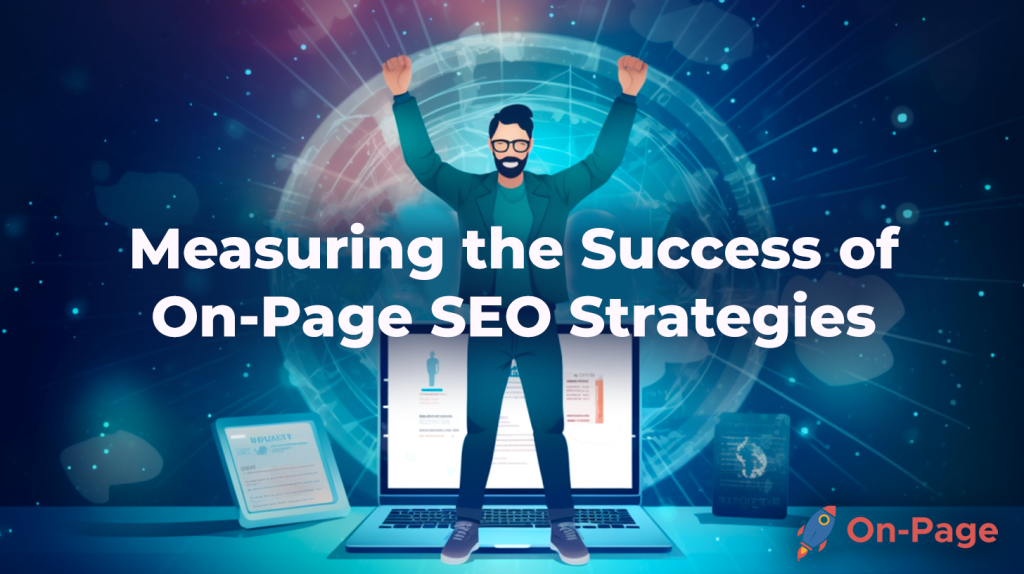
On-Page SEO is vital for search engine optimization success. Seven metrics can be used to evaluate On-page SEO success, including keyword rankings, organic traffic, time spent on page, CTR, bounce rate, returning visitors, and domain authority. By tracking these metrics regularly, you can measure the effectiveness of your On-Page SEO strategies and adjust them accordingly to achieve optimal results.
Critical Metrics for On-Page SEO Success
Measuring the success of on-page SEO strategies is vital to keep track of webpages and content’s visibility, grow organic traffic, and attract new customers. While implementing an effective SEO strategy is a strong start for better website performance, it’s also essential to monitor specific key metrics that can determine the effectiveness of such tactics.
Let’s take an athlete as an example. Athletes who are serious about their approach have time-sensitive goals in mind as benchmarks, like reducing a 10k run-time from 45 minutes to 40 minutes. This type of monitoring ensures that any progress remains measurable and realistic within an established timeframe.
Similarly, tracking progress is crucial for SEO success. Here are seven critical metrics that can help measure the triumph of on-page SEO strategies:
- Keyword Rankings and Organic Traffic
- Time Spent on Page and Bounce Rate
- Click-through Rate and Domain Authority
Think about your keyword rankings as a credit score report; this would determine how well you rank in search engine results for specific keywords, which directly affects the ranking of your site. A lower score implies you’re not performing too well, while a higher score means better visibility and higher rankings.
Some people believe that keyword ranking as a metric doesn’t hold as much power anymore since Google has shifted towards matching queries with relevant topics rather than a string of words or phrases. However, according to Moz studies, keyword-based queries still represent over half of all searches done on Google.
Organic traffic refers to the number of visitors driven to your website after appearing in online searches related to certain keywords. An increase in organic search results means your website’s visibility through keyword ranking has gone up.
Next, let’s discuss two other metrics – Time Spent on Page and Bounce Rate – that play an essential role in measuring on-page SEO strategies’ effectiveness.
- Measuring on-page SEO strategies is crucial for tracking webpage visibility, increasing organic traffic, and attracting new customers. To ensure success, it’s essential to monitor specific metrics such as keyword rankings, organic traffic, time spent on page, bounce rate, click-through rate, and domain authority.
- Just like an athlete monitors their progress towards time-sensitive goals, tracking these key metrics helps ensure that progress remains measurable and within an established timeframe. While keyword ranking might not hold as much power anymore due to Google’s shift towards matching queries with relevant topics, it still represents over half of all searches done on Google.
- Implementing effective on-page SEO strategies along with monitoring these metrics can lead to better website performance and higher rankings.
Keyword Rankings and Organic Traffic
As mentioned earlier, keyword rankings determine how well your website ranks in search engine results for particular keywords. To rank higher, it’s essential to have a solid keyword strategy in place.
- For example, suppose you run a business that sells organic skincare products. Your website should be more likely to rank higher for “organic skincare products” or “natural skincare” instead of generic terms like “skin care.” In this situation, refining your keyword research can help you identify the most relevant and profitable keywords.
- Relying solely on high-traffic keywords won’t guarantee a ranking boost. Instead, incorporating highly-relevant and low-volume long-tail keywords like “organic serum for sensitive skin” or “vegan-friendly natural lotion” into your content can help improve the chances of driving targeted traffic to your website.
Think about targeting specific keywords as choosing the right bait when fishing. To catch the desired fish, you need to think smartly and choose the bait carefully based on what kind of fish you’d like to catch. Targeting the right kind of keywords is like choosing the bait that helps attract valuable traffic to your website.

In addition to targeting specific keywords, organic traffic is another critical metric for monitoring on-page SEO success. Let’s see why organic traffic measurement matters.
Time Spent on Page and Bounce Rate
One of the key measures of on-page SEO success is time spent on page and bounce rate. These two metrics are closely related and refer to how long visitors stay on your website and whether they navigate to other pages or leave immediately.
For example, let’s say you have a blog post that includes a lot of text without any images or videos. If your content isn’t compelling, visitors might only spend a few seconds on your page before leaving, resulting in a high bounce rate. On the other hand, if your content is engaging, visitors are more likely to stay on your page for longer periods of time.
For instance, let’s take the example of an e-commerce website that sells sporting goods. If someone visits their website looking for running shoes, but when they click through saw footballs, they would quickly leave the site – this would result in a high bounce rate because the customer did not find what they were looking for.
- According to studies, websites with higher time spent on page tend to have lower bounce rates and vice versa. This means that if visitors engage with your content for longer periods of time, they are less likely to leave your site without navigating to other pages.
- Think of it like this: A restaurant might not look at the amount of food leftover on a plate as proof that their dishes were delicious. Still, more leftovers could indicate something wrong with those plates’ quality or quantity. Similarly, if people continuously leave a website immediately after arriving (bounce rate) before diving deeper into it (time spent on page), it may signal that something is wrong with the content that lures people in.
However, there are different opinions about how these metrics impact SEO. Some experts argue that Google doesn’t measure time spent on page directly, but rather uses it as an indicator of engagement or relevance. Others believe that it directly impacts rankings.
Click-Through Rate and Domain Authority
Click-through rate (CTR) measures how often visitors click on your website after appearing in search engine results. In contrast, domain authority predicts how well a website will appear in search engine results compared to competitors and is determined based on various factors, including the number of backlinks to your site.
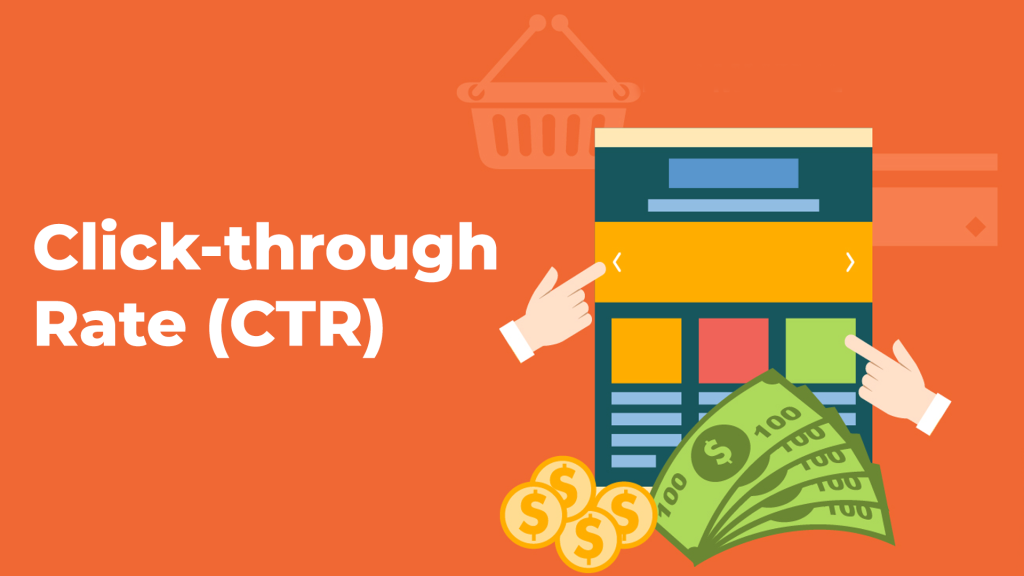
Both CTR and domain authority are critical metrics for measuring on-page SEO success because they indicate how well your website is performing organically. For example, if your website has a high CTR, it means that people are more likely to click through to your site from search engine results, which can lead to increased traffic and conversions. Similarly, if your domain authority is high, it’s an indication that Google ranks you as an authoritative source in comparison to other websites.
However, there are different opinions about how much these metrics impact SEO. While some experts argue that they aren’t significant ranking factors on their own but indicators of overall performance, others believe that they affect rankings directly.
- For instance, let’s take the example of two websites that sell makeup products – one with a high CTR and another with a low one. The website with the higher CTR would likely rank better in search engine results because Google views its content as more relevant and engaging to users searching for similar products or services.
- Think of it like this: If you’re learning how to play basketball and want to get better, tracking your free throw percentage – how many times you get the ball in the hoop versus how many you miss – could give you insight into how successful you are at making baskets. Similarly, tracking your website’s CTR could give you an idea of how appealing and relevant your content is to users searching for similar products or services.
Setting Goals and Benchmarks
When it comes to setting goals and benchmarks for your On-Page SEO strategies, it’s important to have a clear understanding of what you’re trying to achieve. Goals should be Specific, Measurable, Achievable, Relevant, and Time-bound (SMART).
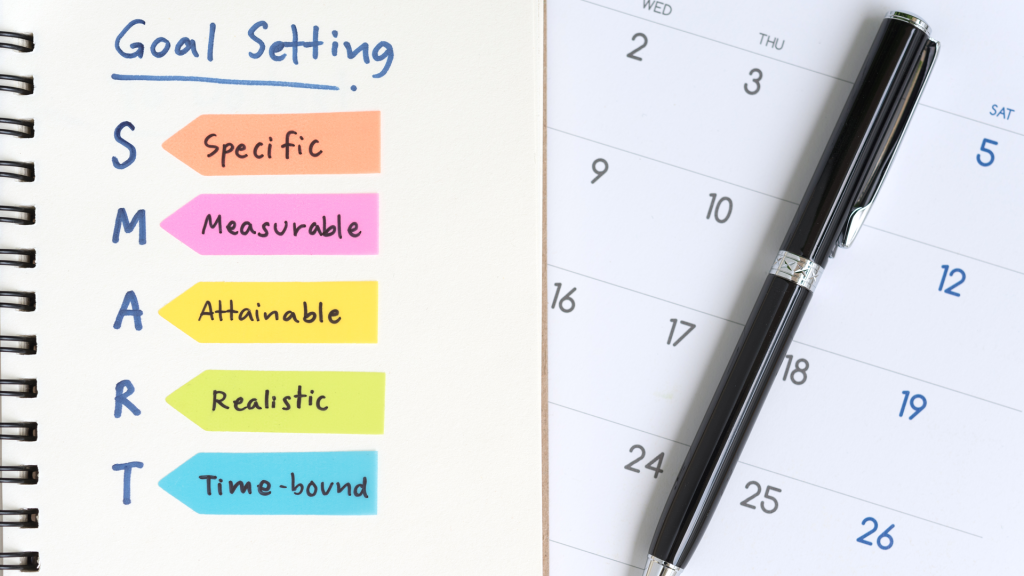
To get started, take a look at the critical metrics we discussed in the previous section (Keyword Rankings, Organic Traffic, Time Spent on Page, Bounce Rate, Click-Through Rate, and Domain Authority). Based on your current metrics, determine what would be considered success for each metric individually and collectively.
For example, suppose you’re currently ranking on page 3 for a particular keyword. In that case, your goal might be to rank on the first page within six months. Similarly, if your website’s average time spent on page is just 30 seconds, then set a goal to increase that number by 50% within the next quarter.
It’s also important to note that different pages on your site may have different goals. For example, an e-commerce site may prioritize product pages’ conversion rate while prioritizing blog pages’ engagement. Make sure you set SMART goals for each page type specifically.
Once you’ve set your goals, establish benchmarks to determine progress. Benchmarks are useful in helping you identify what’s working and what isn’t so you can adjust your strategy accordingly.
Let’s say one of your goals is to increase organic traffic by 25% over the next six months. You can set weekly or monthly benchmarks based on your current traffic levels. If you’re currently receiving 1,000 visitors/month from Google searches, aim to increase that number to 1,250 within three months and 1,500 within six months.
Now that you’ve established SMART goals and benchmarks let’s explore some tips for improving your On-Page SEO metrics.
- According to a research by HubSpot in 2020, 70% of marketers see SEO as more effective than PPC (pay-per-click) advertising when it comes to driving organic traffic and achieving higher search engine rankings.
- A study published in 2021 by Backlinko revealed that the average website’s organic Click Through Rate (CTR) drops significantly from 31.7% for position one in search results down to only 0.78% for position ten.
- A survey conducted by SEMrush in 2020 found that businesses that track on-page SEO performance experience a 65% increase in organic traffic within six months of implementing consistent optimization practices.
Tips for Improving On-Page SEO Metrics
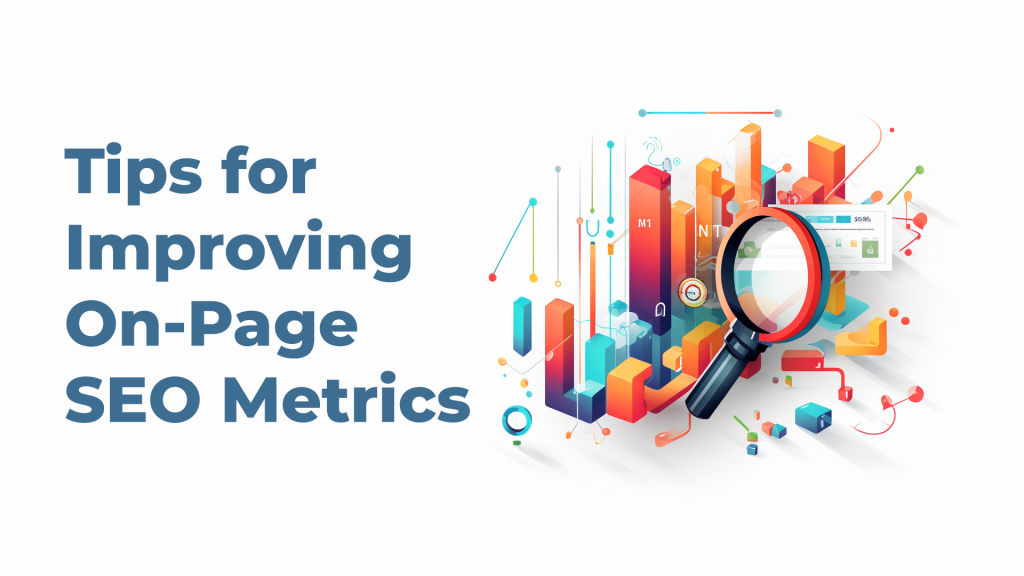
Here are some tips to help you improve your website’s On-Page SEO metrics:
Optimize Your Content
When creating content, make sure it’s optimized for both users and search engines. Include relevant keywords in your copy but never sacrifice user experience by stuffing them frequently.
Research conducted by Backlinko shows that a page’s Content Relevance factors more heavily than Keyword Relevance when it comes to ranking higher on search engine results pages (SERPs).
Focus on User Engagement
Prioritize building informative and engaging content that entices users to remain on your site for extended periods. Adding interactive elements such as videos, infographics, quizzes can also help drive engagement.
In one case study, adding videos to landing pages increased conversion rates by nearly 80%.
Improve Website Speed
Users expect fast-loading pages. A slow website can harm metrics such as Bounce Rate and Time Spent on Page, leading to lower keyword rankings and decreased organic traffic.
According to a recent study conducted by Neil Patel, 47% of customers expect a website to load in two seconds or less. You can use Google’s PageSpeed Insights tool to assess and optimize your website speed.
Optimize Metadata
Ensure that all important metadata (title tags, meta descriptions) is properly set up on each page of your website. These elements provide critical information to search engines about the content on your site.
Think of metadata like a book cover; just as a well-crafted book cover lures readers into reading the book, optimizing metadata helps attract users searching for related keywords.
Leverage Internal Linking
Linking from one page of your site to another helps distribute “link equity” across your website while providing opportunities for navigation between related pages.
Some argue that internal linking can dilute important pages’ “link juice” by spreading it too thin across the website. However, when properly done, it can strengthen a website’s architecture and enhance user experience.
Use tools such as Google Search Console to identify any broken internal links on your website so that you can fix them.
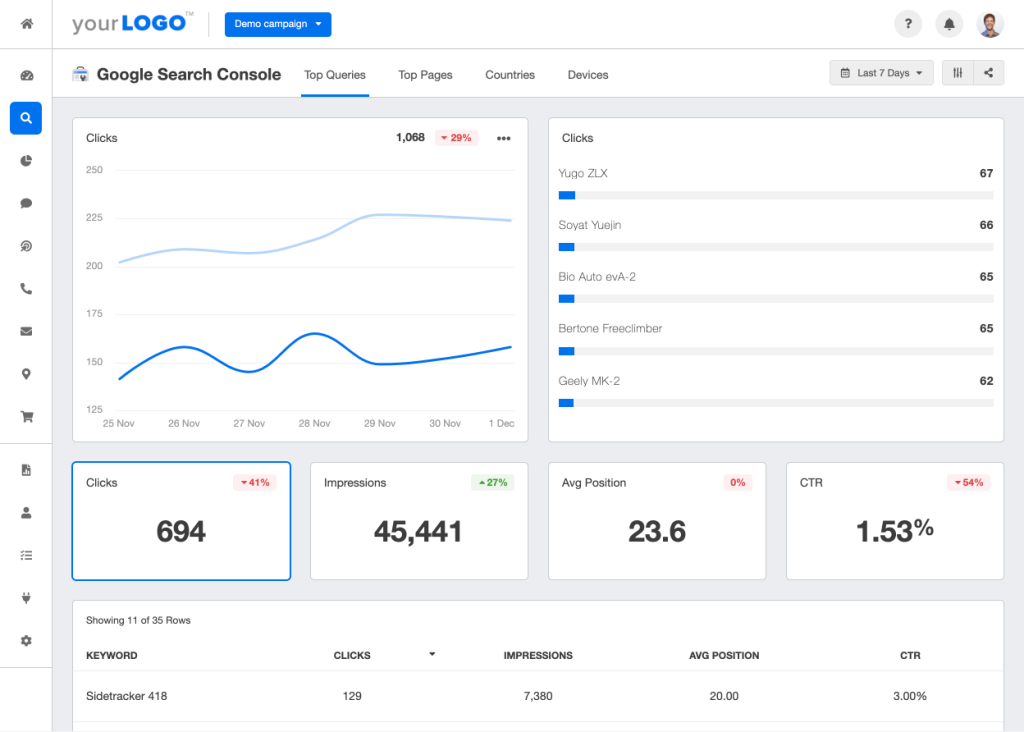
By following these tips, you’ll be well on your way to improving your On-Page SEO metrics and achieving your goals.
Analyzing Competitors’ On-Page SEO Strategies
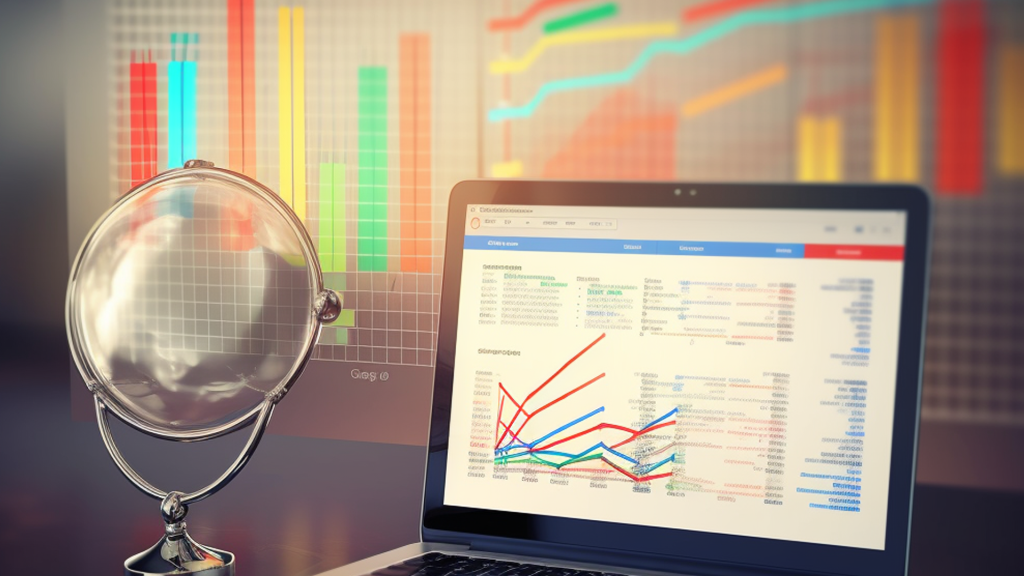
One effective way to improve your own on-page SEO strategy is to analyze your competitors’ strategies. By evaluating what they are doing, you can identify areas where you might be falling short and make necessary adjustments.
- To begin this process, start by identifying your competitors. This could include other businesses in your industry or niche that offer similar products or services. Once you have a list of competitors to analyze, you can begin examining their websites for on-page SEO factors that might be contributing to their success.
- One key area to pay attention to is keyword usage. Look for the specific keywords and phrases your competitors are targeting and how they incorporate them into their website content. Are they included in titles, headers, and body text? Are there any variations or LSI keywords being used?
- Additionally, evaluate whether your competitors are optimizing their content for both humans and search engines. Take note of how easy their site is to navigate and if they are providing valuable content for users. Sites with high-quality content, proper internal linking, and easy-to-use navigation tend to rank higher than those without.
However, it’s important not to rely solely on competitor analysis when creating your own on-page SEO strategy. While you want to learn from successful sites in your industry, you also want to stand out from the crowd. Simply copying the same tactics as everyone else can limit your potential growth and visibility.
Instead, take inspiration from your competition but add unique twists with optimized headings, more informative content pieces arranged in a visual manner that stands out or including additional media such as video or audio files.
Think of it like creating a cake recipe; while you might look at other recipes for inspiration or guidance, ultimately, you will need to add your own touches and flavors to make yours unique and stand out.
In conclusion, analyzing your competitors’ on-page SEO strategies can provide valuable insights into what is working in your industry. However, it’s important to not simply copy their strategies and instead add unique touches to your own strategy. Using the advanced features of On-Page.ai, you will be able to ease your process of competitor analysis with its sophisticated features such as content optimization recommendations, detailed report generation etc. allowing you to further customize your approach that would help in standing out from the competition and eventually improving your business visibility online. Create an account with On-Page and discover the possibilities to determine the performance of your SEO tactics.




